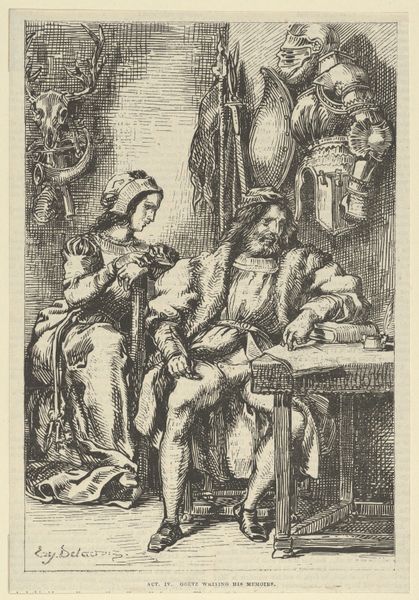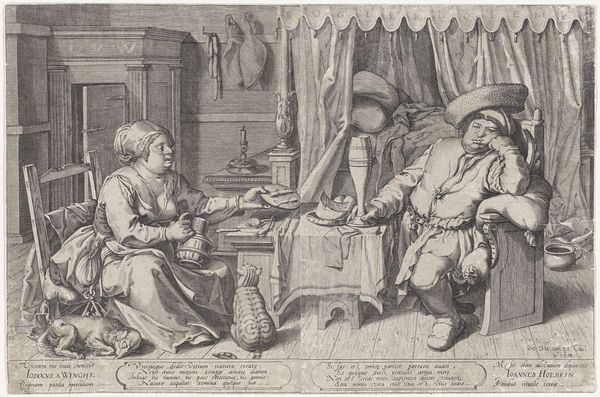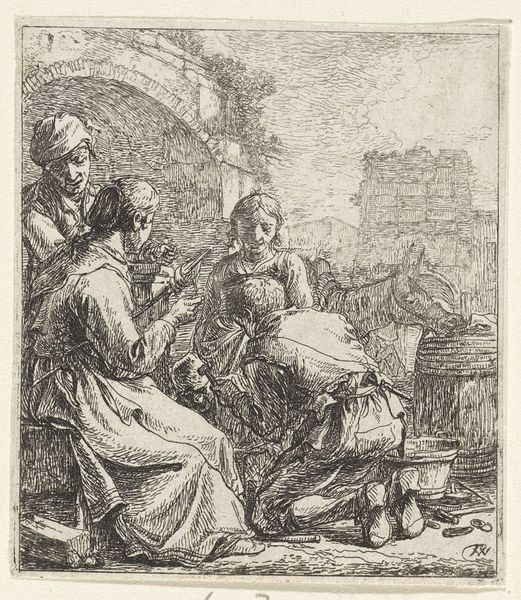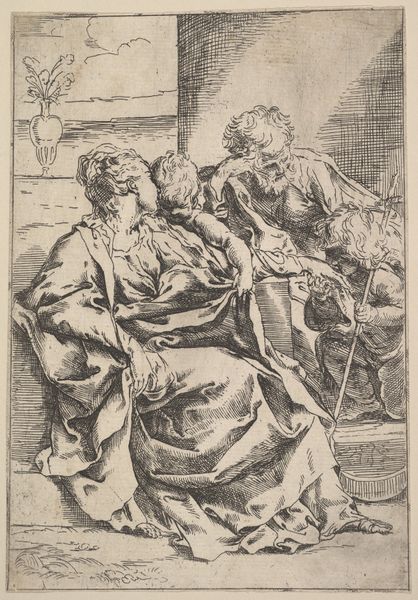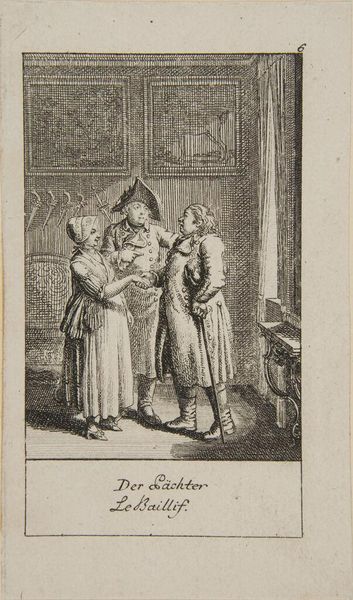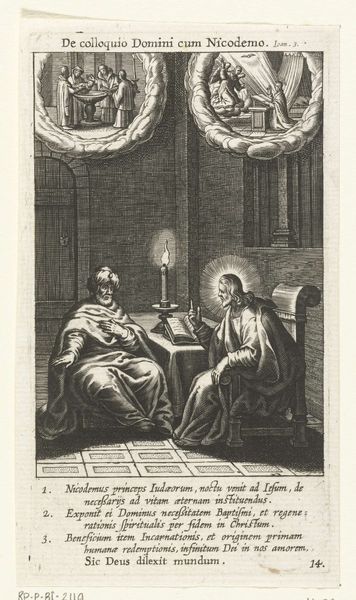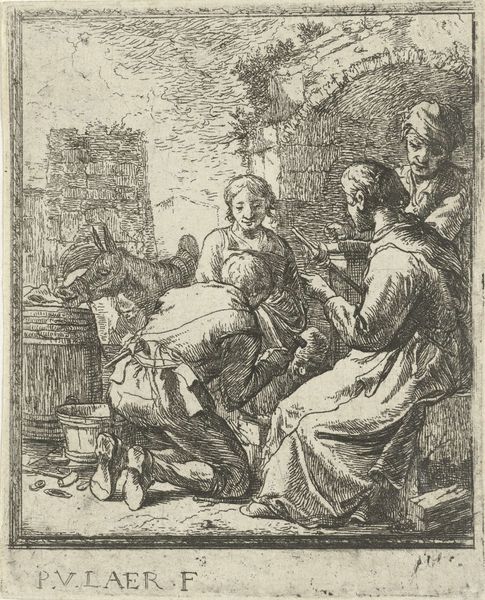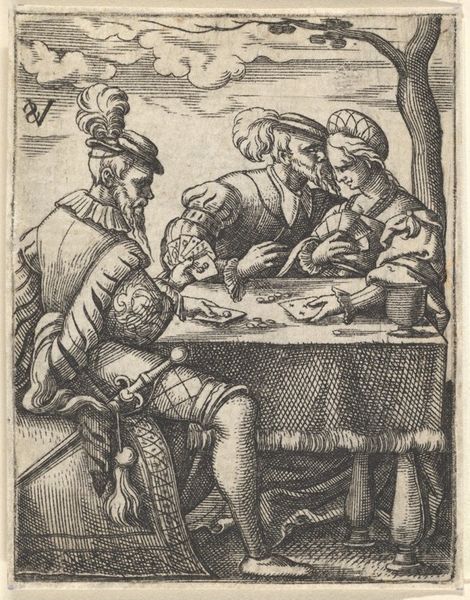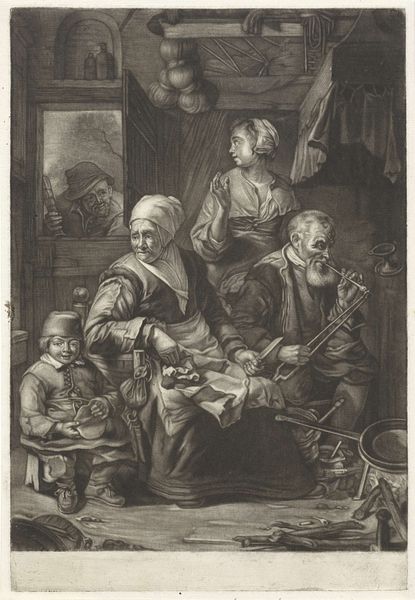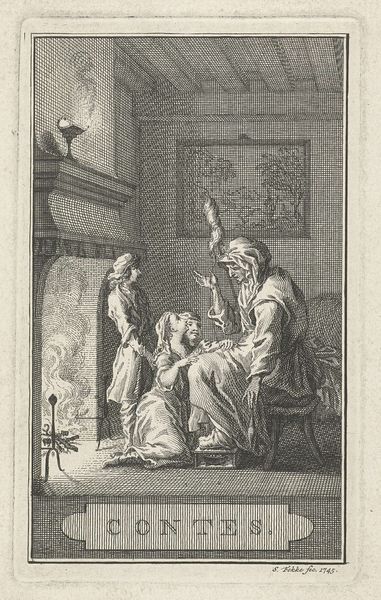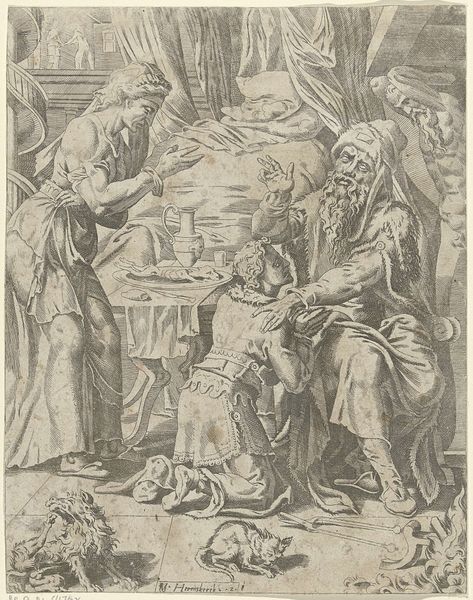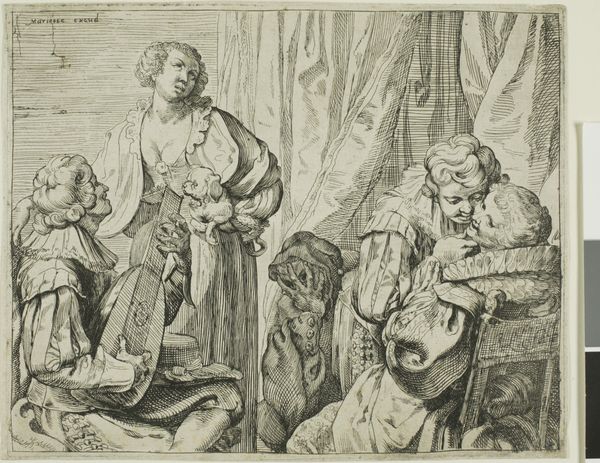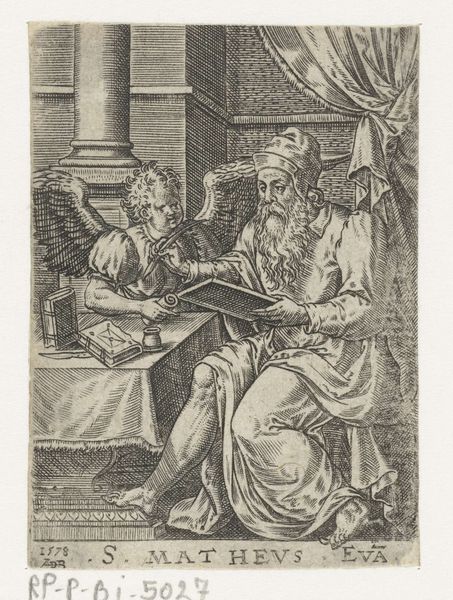
drawing, etching, ink
#
portrait
#
drawing
#
pen drawing
#
dutch-golden-age
#
etching
#
figuration
#
ink
#
genre-painting
Dimensions: height 146 mm, width 89 mm
Copyright: Rijks Museum: Open Domain
Curator: This is Arnold Houbraken’s “Two Women with a Uroscopist," made sometime between 1681 and 1683. Editor: My first impression is intrigue mixed with a sense of confinement. The figures seem quite constricted within the composition, especially with the heavy drapery and the patterned floor closing in on them. There’s a palpable tension here. Curator: That tension speaks volumes about the role of women in the Dutch Golden Age, wouldn't you say? Houbraken’s choice to depict these women seeking counsel from a uroscopist—someone who analyzes urine to diagnose ailments—situates their health and well-being within a patriarchal system where their bodies were often subject to male interpretation. Editor: Precisely. It underscores the limitations placed on women’s autonomy and medical agency at that time. The uroscope, a symbol of male authority, literally mediates the women's connection to their own bodies. What's also fascinating is that genre scenes such as these frequently portray domestic environments in detail. What do you notice in terms of setting? Curator: Yes, note the table covered in what appears to be luxurious fabric and objects. Those likely signify wealth. But the dog near the old man’s feet intrigues me. This adds another layer, given dogs’ traditional association with fidelity. Does the image imply the women’s infidelity and therefore, an urgent need for the Uroscopist? I find the image both fascinating and frustratingly obscure. Editor: Well, the dog's inclusion might comment more broadly on social commentary of trust and betrayal but ultimately I agree that there is something enigmatic about this scene that prevents closure, or definite interpretations, speaking to the lived realities of seventeenth-century Dutch women. Houbraken used ink and etching techniques to produce this rather intimate image, capturing fine lines, textural nuances... Curator: The fact that it is a print means that it had a wide reach. One can only imagine the types of discussion it would have generated. Ultimately it serves as a lens through which to examine evolving attitudes toward gender roles during that period. It’s now housed right here at the Rijksmuseum. Editor: This piece serves as a potent reminder of how art functions as a time capsule reflecting not just aesthetics, but also deeply entrenched social power structures. Examining them in such details is precisely the challenge and delight of experiencing visual art today.
Comments
No comments
Be the first to comment and join the conversation on the ultimate creative platform.
